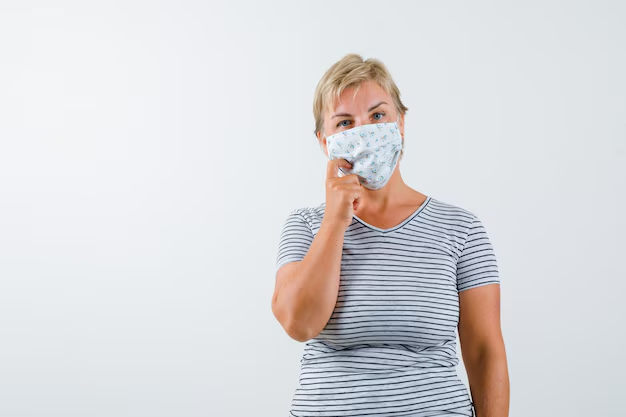Could You Have Tuberculosis? Here's What Early Symptoms Look Like
Tuberculosis (TB) is a widespread infectious disease that has impacted humanity for centuries, causing significant health issues worldwide. Understanding the early signs of tuberculosis can be crucial for early detection and treatment, preventing the disease from advancing and spreading. If you're wondering what symptoms to look out for, you're in the right place. This article will guide you through the early indicators of TB, elaborate on the disease and its implications, and provide practical insights to empower your understanding of the condition.
Unveiling Tuberculosis: A Quick Overview
Tuberculosis (TB) is an infectious disease primarily affecting the lungs, though it can spread to other organs. It is caused by the bacterium Mycobacterium tuberculosis. TB is airborne, transmitted from person to person through droplets released when an infected person coughs or sneezes. Despite being curable and preventable, TB remains a public health challenge, especially in underprivileged areas.
Global Impact: TB is one of the top ten causes of death worldwide and remains a major challenge, particularly in developing countries. Awareness and early detection are key elements in combating this disease.
Recognizing the Early Signs: What to Watch Out For
Persistent Cough
A cough lasting more than three weeks is one of the most common signs of tuberculosis. While coughing is a typical symptom of many respiratory illnesses, TB coughs are noteworthy for their persistence and productivity.
- Productive Cough: It often produces sputum and may contain blood.
- Associated with Discomfort: The cough is usually accompanied by chest pain and discomfort.
Fever and Night Sweats
Fever is a common symptom for many infections, but in the case of TB, it often presents alongside night sweats.
- Low-Grade Fever: The fever is generally mild but persistent.
- Night Sweats: Sufferers often experience heavy sweating at night, often drenching the bedclothes.
Weight Loss and Loss of Appetite
Unexplained weight loss and a significant decrease in appetite can be telling symptoms of tuberculosis.
- Sudden Weight Loss: This is often termed as “wasting" because the body seems to waste away.
- Loss of Appetite: Accompanying this weight loss is usually a lack of interest in food.
Fatigue and Weakness
Chronic fatigue and a general sense of weakness are common with TB, stemming from the body's resources being directed towards fighting the infection.
- General Weakness: A pervasive sense of fatigue that does not go away with rest.
- Impaired Functioning: Difficulty performing daily activities due to exhaustion.
Other Symptoms
- Chills: Alongside fever, chills can occur.
- Swollen Lymph Nodes: Particularly around the neck area.
- Breathing Difficulty: Shortness of breath and chest pain during breathing or coughing.
Tuberculosis: Delving Deeper into the Disease
Types of Tuberculosis
TB can be classified into two main types: Latent and Active TB.
- Latent TB: The bacteria remain in the body in an inactive state and cause no symptoms. However, they can become active later.
- Active TB: The bacteria are active and cause symptoms, making the individual contagious.
Risk Factors
Understanding who is at increased risk can aid in early detection and prevention.
- Immunocompromised Individuals: Those with weakened immune systems, such as HIV/AIDS patients, are more susceptible.
- Close Contact: Living or working in close quarters with someone who has active TB.
- Travel to TB-Prevalent Areas: Frequent travelers to regions with high TB rates, such as parts of Asia and Africa.
Testing and Diagnosis
Detecting TB at an early stage requires prompt diagnostic testing, usually starting with a visit to a healthcare provider if symptoms persist.
- Skin Test (TST): Often the first step, this involves injecting a small amount of testing fluid under the skin.
- Blood Tests: These can assess the presence of TB bacteria.
- Chest X-rays: To visualize lung abnormalities.
- Sputum Tests: Analysis of sputum samples for TB bacteria.
The Importance of Early Detection
Early detection not only improves treatment outcomes but also limits transmission to others.
- Prevention: Prompt treatment can prevent the spread of TB to family members and the broader community.
- Reduced Complications: Early treatment can mitigate the complications associated with advanced disease progression.
Practical Insights and Living with Tuberculosis
Managing Symptoms
While TB is curable, the treatment journey requires adherence and perseverance.
- Follow Medical Advice: It is crucial to complete the entire course of medication, even if symptoms improve.
- Monitor Nutrition: Maintaining a healthy diet can be important for overall recovery.
- Regular Follow-ups: Regular medical check-ups are essential to monitor progress.
Preventive Measures
Preventing TB involves both individual actions and public health strategies.
- Vaccination: The Bacille Calmette-Guérin (BCG) vaccine offers protection, though it's not widely used in countries with low TB prevalence.
- Hygiene Practices: Covering the mouth and nose during coughing or sneezing, and maintaining good ventilation in living areas.
- Regular Testing: For those at risk, regular testing can aid in early detection.
Towards a Healthier Community
Understanding the early signs of tuberculosis is pivotal in the global fight against this age-old disease. By recognizing the symptoms and knowing your risks, you can help reduce the spread and impact of TB. Community awareness, informed action, and early intervention can turn the tides against tuberculosis, protecting yourself and those around you.
🌟 Key Takeaways Summary:
- 💡 Persistent Cough: A persistent cough lasting more than three weeks merits attention.
- 🌡️ Fever & Night Sweats: Look out for mild fever accompanied by night sweats.
- 🍽️ Weight & Appetite: Unexplained weight loss and loss of interest in food.
- 💪 Fatigue: Ongoing fatigue that doesn't resolve with rest.
- 🔍 Early Detection Matters: Quick testing and diagnosis can prevent disease spread.
- 🛡️ Prevention Strategies: Vaccination, hygiene practices, and awareness can curb transmission.
